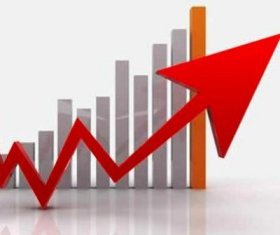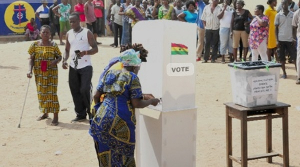Business News of Friday, 13 May 2016
Source: B&FT
Inflation uncertainty heralds MPC meeting
 Diagram elaborating the rise of inflation
Diagram elaborating the rise of inflation
The Monetary Policy Committee (MPC) of the Bank of Ghana is set to begin its 70th regular meeting today, faced with the challenge of how to contend with a stubborn inflation that seems to be producing mixed results despite further tightening of the monetary stance over the last months.
The Ghana Statistical Service on Wednesday announced that April’s inflation had declined to 18.7 percent after the previous month’s had risen to 19.2 percent, which was the highest in the last six and half years.
The last MPC meeting in March concluded with the committee staying the rate at 26 percent, despite acknowledging that inflationary pressures remain far from being subdued. The following month inflation jumped to 19.2 percent.
As the MPC begins its meeting to review developments within the economy, it is expected that fresh measures to arrest inflation will remain high on the agenda. Today’s meeting will be the first that Dr. Abdul-Nashiru Issahaku will be chairing since he took over from Dr. Henry Wampah in April.
The BoG’s goal of bringing inflation down to a single digit by 2018 is expected to be given new impetus by the new governor. At 26 percent Ghana’s policy rate, which is indicative of banks’ lending rates, is the second-highest in Africa after Malawi.
Some analysts argue that the MPC will maintain the policy rate, citing the fact that raising the rate further could be counterproductive and adversely affect the economy. Nevertheless, the International Monetary Fund (IMF) lauded the BoG for its tight policy stance.
The Fund after its review of the country’s programme stated that: “The increase in BoG’s policy rate in 2015 has been instrumental in reducing exchange rate volatility. Building on continued progress in improving the effectiveness of its inflation targetting framework, BoG remains committed to maintaining an appropriate monetary policy stance to bring inflation down toward its medium-term objective”.
Despite inflation climbing to a near 7-year high in March, the decline in April inflation to 18.7 percent should offer the central bank some respite to perhaps prevent it from hiking the policy rate.
The inflationary pressures, it must be pointed out, remain high -- emanating from the pass-through effects of the recent utility increases as well as fuel price increases.
The IMF at the end of its third review mission on Wednesday acknowledged that inflationary pressures are still high in the economy, following the significant increases in utility and energy tariffs.
“Despite the more difficult global environment, with lower commodity prices and domestic power shortages, economic growth in 2015 was close to 4 percent -- slightly higher than expected. Inflation, which remains still high at 19.2 percent in March 2016, is being affected by the increase in utility tariffs, energy sector levies and transportation costs; but core inflation has started to decline in recent months,” said leader of the Fund’s team, Joël Toujas-Bernaté.
The central bank’s inflation-targetting framework however has not gone without criticism, with Executive Director of Institute for Fiscal Studies (IFS) Prof. Newman Kusi leading the charge --describing the framework as ‘ineffective’.
According to him, the inflation-targetting framework is ironically one that contributes to the continual rise of inflation.
He told B&FT that the central bank’s decision to increase the cost of capital or mop up liquidity from the system as a way of reducing demand or consumption to sustain the pressure on prices is a misplaced approach.
He explained: “The inflation that we have now is not demand-cost but cost-push inflation -- in the sense that the exchange rate is being depreciated and this is a country where everything is imported. So as exchange rates depreciate, the landed cost of imports also goes up and automatically feeds into the price”.










